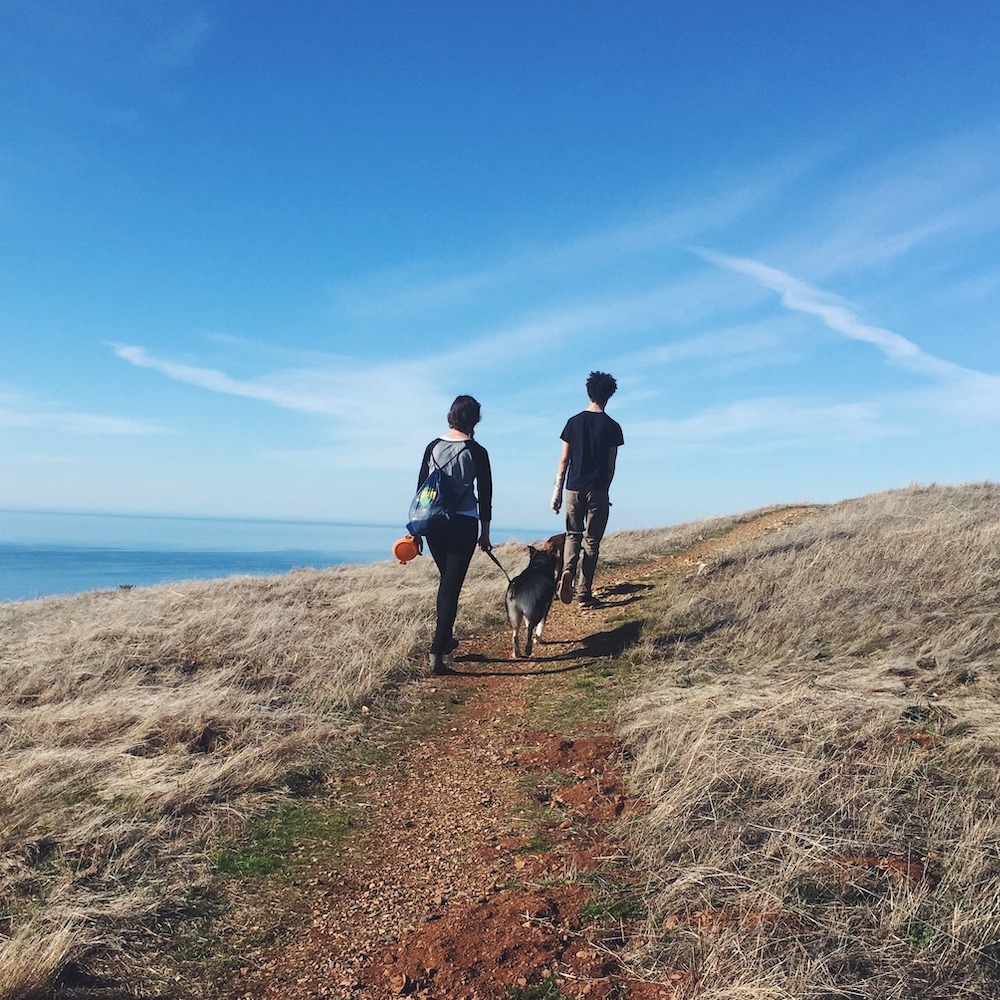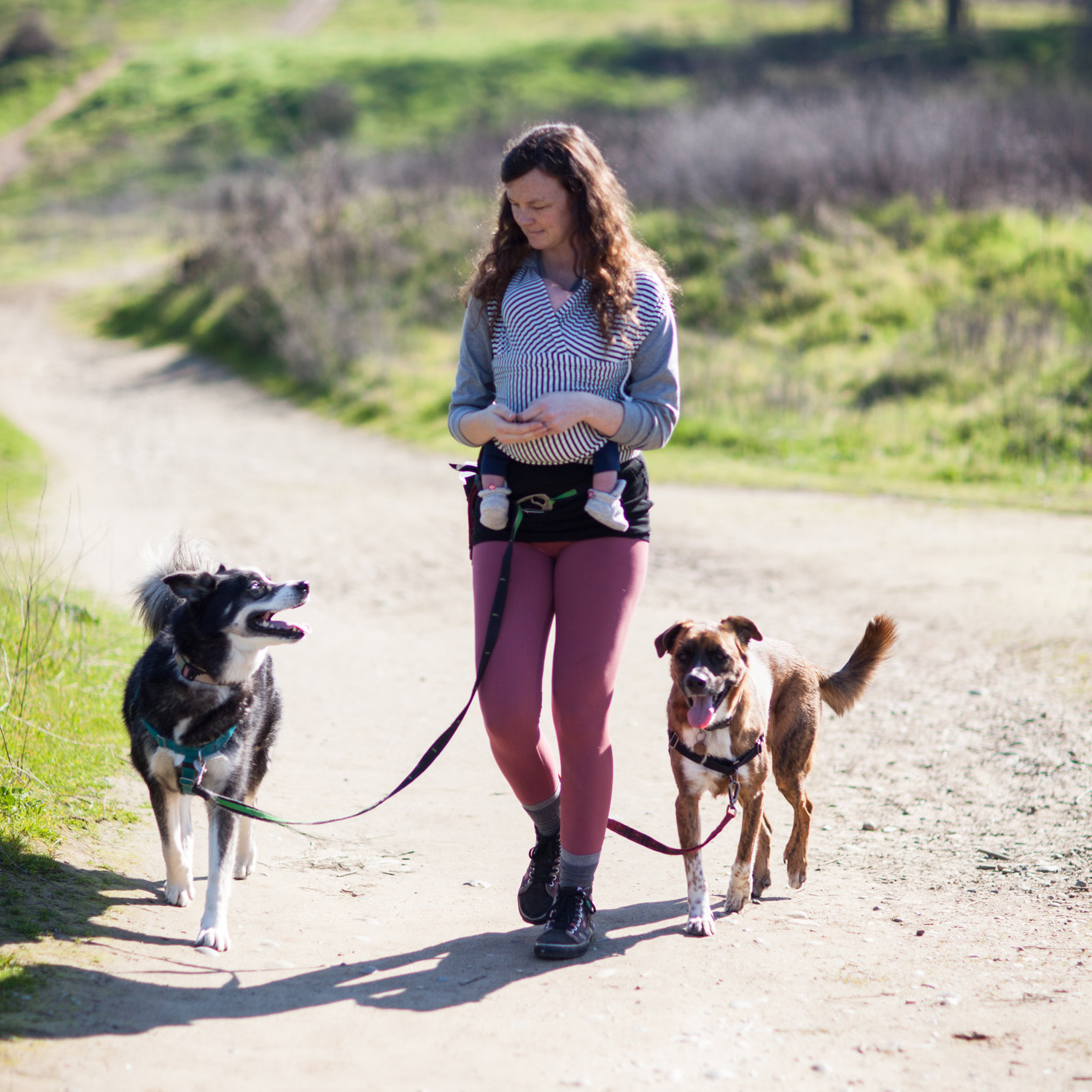You’ve been practicing your loose leash walking in a distraction-free area at home, in the backyard, in your neighborhood, and now you’re ready to start going for dog walks in the wider world.
As you start walking and showing off your leash training everywhere, you may notice in new environments, your dog might pull again after just a few steps. Why? Because you're teaching your dog to walk in a new environment and that may mean you need to go back to loose leash walking basics. Don't get frustrated, pulling on leash is one of the most natural behavioral issues pet parents face!
Your Dog's Plan
Stop! Don't read this long article. Instead, get everything you need to know, including all advice on Leash Manners, in a customizable step-by-step plan for your dog created by our community of certified trainers and nutritionists.
Where did all our wonderful on-leash dog training go?
All of a sudden it seems, your very good dog pulls on leash and it’s harder to get your dog to focus on the loose leash training skills you and your pup built. Take it from a professional dog trainer, leash training, or ANY dog training for most dogs, is rarely a straight line to successfully getting your dog to "walk nicely" when you start walking in the real world!
Here are four strategies to strengthen and maintain your loose leash training with your dog as you practice walking in a new environment
Step 1: Load up on deliciously smelly treats
One common complaint I hear often is that a dog won’t take treats out and about. My dogs are the same! When things are just too exciting, food becomes a much lower priority.
This is when you need to break out the REALLY good stuff. Meat is usually a good choice! It may be messier to handle deli meats or chicken when you leash train, but commercial treats sometimes just don’t cut it (although I have a few favorite treats that are smelly and good for them that my dogs LOVE).
Tell me more
Be sure to reward frequently and generously with that super tasty treat! You want your positive reinforcement to make your dog's loose leash walking behavior MUCH more worth doing than whatever intriguing distractions -- other dogs, a tree sniff, squirrels -- might grab their attention.
Try this
Figure out what your dog considers a high-value treat and load up your treat pouch with it before taking your dog to walk outside your house. The smellier the better!
Leash Manners
Interested in Leash Manners? Follow topics you're interested in to customize your dog’s step-by-step plan so it's most helpful and tailored to your dog when you're ready to get started.
Step 2: Warm up as you begin to teach loose leash walking 2.0
Yes, the goal is to get out and walk in the world - the fully expanded version of the loose leash walking you've been practicing in training sessions in your non-distracting area. But take a moment to get focused with your dog and pre-empt pulling behavior.
Try this
Begin practicing marking and treating your dog for eye contact by the car, maybe toss some “find it” treats and then mark your dog (preferably with your clicker) for refocusing on you. Continue rewarding your dog for every good behavior, and reward frequently for every bit of success!
Hand targeting is a great warm-up game to play with dogs who have a strong positive reinforcement history with it! Be exciting. Let your dog know that even though you’re in a new environment with new smells and sights, you’re still pretty cool!

Enjoy your dog walks! Load up on lots of treats before you walk, let your dog sniff, and keep you training sessions short to set your dog up for success.
Step 3: Use the environment on your dog walk to your advantage
Food is a great primary reinforcer because ALL dogs need and want food, but there are lots of things in the world that are naturally reinforcing to our dogs. Like a good sniff - smelling shrubs, for example! Take advantage of moments when your dog is behaving how you’d like him/her to, and reward your dog by giving access to interesting things without your dog pulling you to them. You can still layer on the praise and offer treats as well to celebrate that your pup understands not having to pull and having him/her sniff at the same time!
Try this
Encourage your dog to take time to sniff without your dog needing to pull you to the enticing sniff spot. In other words, reward your dog for not pulling with a good sniff!
Your Dog's Plan
Stop! Don't read this long article. Instead, get everything you need to know, including all advice on Leash Manners, in a customizable step-by-step plan for your dog created by our community of certified trainers and nutritionists.
Step 4: Make sure your dog has other outlets for wild rumpus time fun
If walking is the only time your dog gets to bust loose and have some fun, he/she is likely to want to go fast and get a little silly! Remember to keep your training sessions short. It's always better to train for short periods but repeat more frequently. If you have a fenced-in yard, take breaks to take your dog's leash off and let your dog be free to be a dog!
Try this
Find somewhere outdoors wide open and safe where you can trade your dog's regular leash for a long leash and let your dog run, zig zag around, and sniff to his/her heart's delight! (Remember, we should never be using a retractable leash!) Dogs are great at noticing that different equipment signals different behaviors. You can even add a verbal cue to let your pup know it’s free time vs walk nicely time if you’d like!
Walking
Need more advice? Browse all guides in the Walking Channel on topics like Leash Manners - created by our community of certified experts for you and your dog.
Next up in the Walking Channel on Dogly
Now that your dog has learned loose leash walking basics inside, in your backyard & neighborhood, and in new environments, hopefully you and your dog are enjoying your walks together more! If not, don't worry. You can always go back through the step-by-step guides in Leash Manners and/or continue on to the next guide where we'll go through six tips if your dog is still pulling on leash.
If you have any questions, jump over to the Community discussion in the Walking Channel on Dogly or start any of the other step-by-step guides.
And if you ever need more personalized training help, please reach out!

